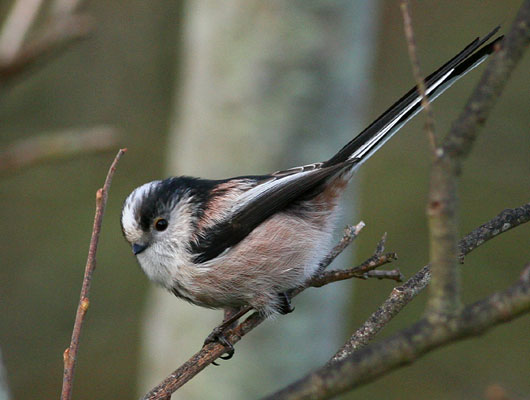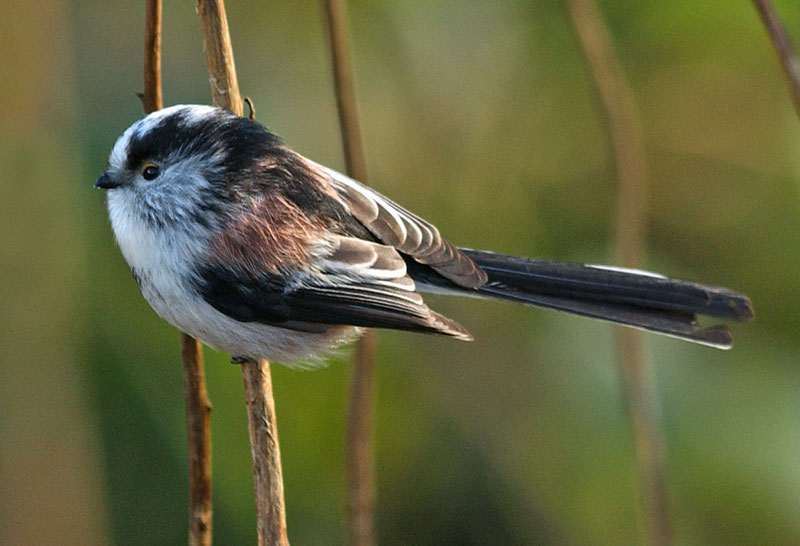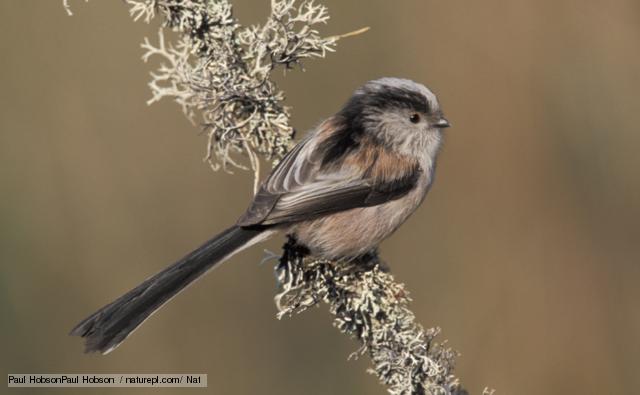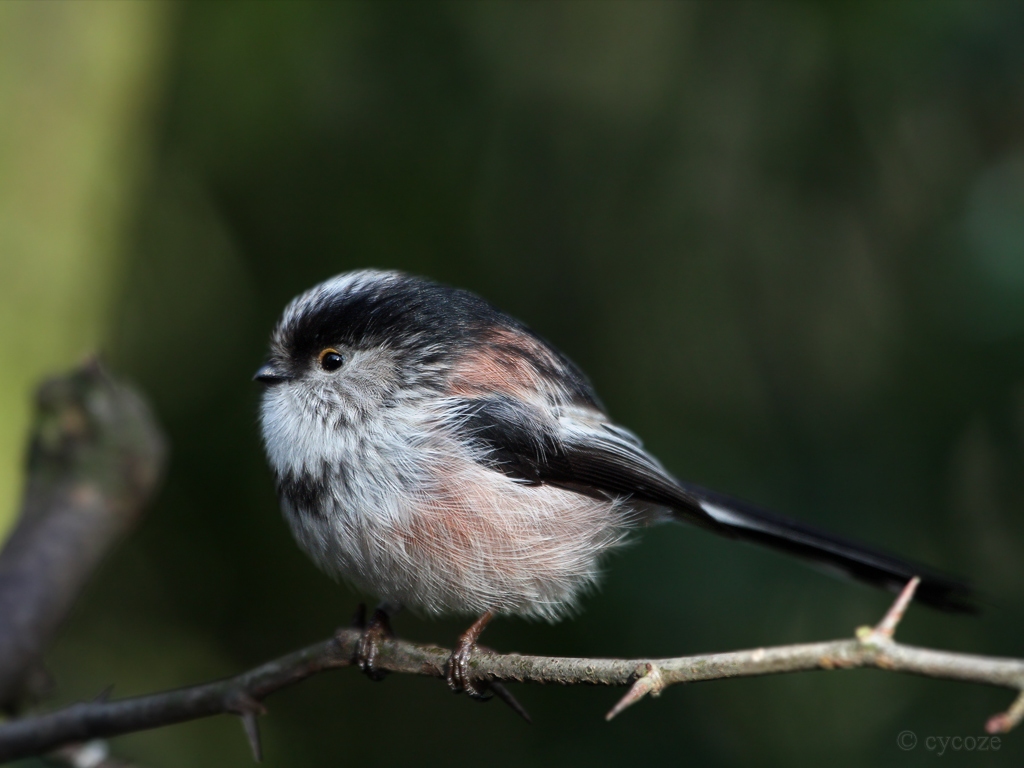
Aegithalos caudatus
TAXONOMY
Aegithalos caudatus Linnaeus, 1758. Nineteen subspecies are
recognized.
OTHER COMMON NAMES
French: Mйsange а longue queue; German: Schwanzmeise;
Spanish: Satrecito de Cola Larga.
PHYSICAL CHARACTERISTICS
5–6.3 in (13–16 cm). Small tit with extremely long tail,
plumage variable across range but generally a mix of black,
white, and pink.
DISTRIBUTION
The most widespread of the long-tailed tit family with a range
from western Europe through Asia, and into China and Japan.
HABITAT
Woodland, deciduous, and mixed with plenty of scrub in which
to forage and nest.
BEHAVIOR
A gregarious and acrobatic species, often first picked up on call
(tsee-tsee-tsee). Flock frequently observed flying in single file,
one bird at a time, from bush to bush. Roost communally on
branches, huddled together in cold weather.
FEEDING ECOLOGY AND DIET
Largely invertebrates, especially insects and spiders.
REPRODUCTIVE BIOLOGY
Nests March to June. Oval ball-shaped nest of moss and
lichen, lined with feathers, located low in bushes and shrubs.
Clutch 8–12 eggs, incubation 12–18 days, fledging 14–18 days.
Nonbreeding birds may assist parents with feeding of young.
CONSERVATION STATUS
Not threatened. Common across range, suffers after harsh winters,
and takes a few years to recover population.
SIGNIFICANCE TO HUMANS
None known.
Other popular Animals
Photo Gallery of - Long-tailed tit




 Animalia Life
Animalia Life